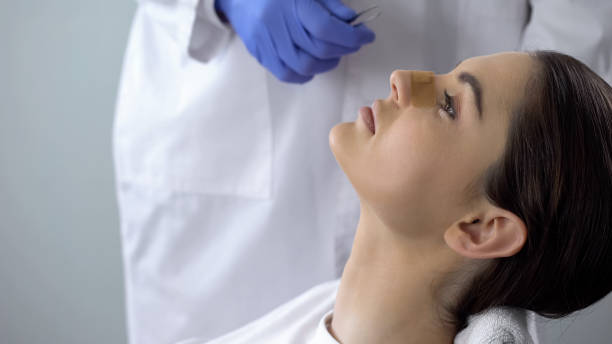Alarplasty In Riyadh: What To Expect Before, During, And After Surgery
Alarplasty, also known as alar base reduction surgery, is a popular cosmetic procedure designed to enhance the shape and proportion of the nose by narrowing the width of the nostrils. Many individuals opt for this surgery to achieve improved facial harmony and a more balanced nasal appearance without undergoing more extensive rhinoplasty. Understanding the entire process of alarplasty, from preparation to recovery, is essential for patients considering this procedure.
Understanding Alarplasty
Alarplasty in Riyadh is performed under either local or general anesthesia depending on patient preference and surgeon recommendation. The procedure is minimally invasive with small incisions discreetly placed in the natural creases at the base of the nostrils, helping to minimize visible scarring.
What to Expect Before Alarplasty Surgery
Initial Consultation and Planning
Before surgery, a detailed consultation is conducted to discuss your aesthetic goals, nasal structure, and overall health. Surgeons analyze the nose shape and facial proportions to create a personalized surgical plan that will deliver natural-looking results.

Preparing for Surgery
Preparation involves:
Stopping smoking to promote better healing
Arranging for transportation on surgery day since driving immediately after is not recommended
Following any specific fasting instructions if general anesthesia will be used
The Alarplasty Procedure: Step-by-Step
Marking and Anesthesia
The surgeon begins by cleaning and marking the exact area of the nostrils to be resized for precise sculpting. Anesthesia is administered to ensure a comfortable and pain-free experience.
Incision and Tissue Removal
Small incisions are made inside or along the nostril base folds. The technique varies based on individual needs—either narrowing the nostril base, reducing wedge-shaped tissue, or refining with sutures to contour the shape.
Suturing
After tissue removal, fine sutures close the incisions, maintaining symmetry and contour. These stitches may be dissolvable and are designed to reduce the chance of noticeable scars.
Dressing the Area
A bandage is applied to protect the surgical site and support the nose’s new shape during the initial healing phase.
After Surgery: Recovery and Care
What to Expect Immediately After Surgery
Swelling and minor bruising around the nose are normal after alarplasty and typically begin to subside within three weeks. The bandage and stitches usually remain in place for about a week.
Post-Operative Care Tips
Keeping the wound clean and using medicated washes as advised
Avoiding touching, rubbing, or squeezing the nose to prevent irritation or infection
Taking prescribed pain relief medication and antibiotics as directed
Protecting the nose from sun exposure and trauma
Maintaining proper hydration and a nutritious diet to support healing
Full Results and Healing Timeline
While initial improvements are noticeable within weeks, complete healing and final results can take up to a month. Most patients enjoy faster recovery compared to more invasive nasal surgeries, with minimal downtime and quick return to daily activities.
Benefits of Alarplasty in Riyadh
Provides a more harmonious and proportionate nose shape
Enhances facial symmetry and balance
Minimally invasive with discreet scars
Short recovery period
Common Questions
What kind of anesthesia is used for alarplasty?
Typically, alarplasty is performed under local anesthesia but can be done under general anesthesia if preferred or medically necessary.
How long is the alarplasty surgery?
The procedure usually takes about 1 to 2 hours depending on the extent of tissue removal.
When can I resume normal activities?
Most patients resume light activities within a few days but should avoid heavy exercise or strenuous work for 2 to 3 weeks.
Will the scars be visible after alarplasty?
Incisions are strategically placed in natural nostril creases to ensure minimal visible scarring.
Book Your Appointment Today
If you are considering refining your nose shape with expert care, schedule your consultation at Enfield Royal Clinic. The skilled surgeons at this clinic specialize in Alarplasty in Riyadh, offering personalized treatment plans to help you achieve a natural, balanced, and beautiful look.